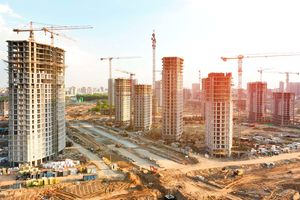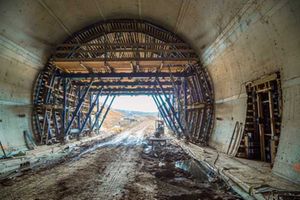
Some developers and residents see Resident associations as gatekeepers introducing unnecessary bureaucracies while creating exclusionary communities.
Once merely concerned with estate security and the state of access roads, Resident Associations in Kenya are now breaking out of their shells. One by one, they are forming strong alliances and building strategic partnerships with critical decision makers in both national and county governments.
On their way to the top, these associations have made foes and friends in equal measure. On one hand, some developers and residents see these unions as gatekeepers introducing unnecessary bureaucracies while creating exclusionary communities. On the other, government agencies and residents see them as the key to organised public participation and allies in curbing uncontrolled development.
Although Resident Associations play a big role in creating livable, sustainable and orderly communities, there is a glaring gap in their legal powers and framework, leaving room for conflict.
In February 2025, the Kajiado County Alliance of Residents’ Associations hit headlines after signing a Memorandum of Engagement with the County Government of Kajiado, institutionalising public participation in development control. This agreement empowered Resident Associations in the county to ensure new developers engage communities while following county zoning policies. Developers were mandated to present a No Objection Letter as proof of such engagement.
While developers are legally required to engage in public participation, especially when applying to change the intended property use from one category to another, no other county had formalised, on paper, a No Objection Letter as an important requirement in this process. The Memorandum of Engagement was, however, legally, non-binding. This partnership was perceived as a major step in curbing uncontrolled development while taming rogue developers. In addition, it put residents at the centre of development control.
Just three months later, however, in June 2025, the Kajiado County Governor Joseph Ole Lenku revoked the MoE, to everyone’s surprise.
“After careful evaluation of the role Resident Associations were meant to play and having received overwhelming feedback from the public, I have revoked with immediate effect the requirement for Resident Associations to participate in the building plan approval process,” said Governor Lenku, in an earlier report by the Daily Nation.
Meanwhile, unconfirmed reports show Machakos County Governor Wavinya Ndeti issued a similar directive in May, 2025 requiring developers to present a No Objection Letter alongside their applications for building approvals. The aim is to ensure community engagement, accountability and transparency from developers.
Impacting Property Values
Although Resident Associations play an important role in shaping neighbourhoods, increasing cases of conflict between them and the public call for a closer look at how these associations operate.
The Syokimau Residents Association, for instance, formed in 2010, has played a crucial role in creating a neighbourhood that everyone wants to be a part of. Before the Association was created, in the mid and late 2000s, Syokimau was barely attractive. Several residents had put up nice residential homes but the access roads were difficult to navigate, especially during the rainy season. Constant drainage issues made the roads impassable during such seasons while trucks ferrying construction materials from neighbouring quarries took a toll on the roads, leaving a trail of dust every time they passed through the estates during the dry seasons.
The Association was instrumental in introducing barriers and security personnel to some of the estates, which restricted access to residential areas, subsequently improving security and the quality of life for residents. The association has also grown to host the Syokimau Trade Expo which connects businesses along Mombasa Road with hundreds of residents in Syokimau.
These big and small efforts have boosted property values in Syokimau to impressive numbers. In 2023 for instance, an acre of land in the area was fetching about Sh29 million, and in 2024 that figure jumped to Sh34 million. Apartment prices are almost catching up with other higher end locations like Westlands while rental values are appreciating impressively.
While the Association’s efforts have created a sought-after neighbourhood with ever-rising property values, critics are not happy with some of the measures used to shape development. Just recently, for instance, a disgruntled TikTok user shared a series of videos criticising the association for collecting fees from residents. The user compares this exercise to tax collection, opposing it as irregular and illegal. But some users commenting on the issue termed this practice “normal”, adding that they pay way more where they live. Others supported the user and argued that allowing Resident Associations to hold such powers is not only unprogressive, but it also makes homeownership unnecessarily expensive to people seeking a break from the rental market.
The Syokimau Residents Association is, however, not an isolated case. Runda, one of the most prestigious estates in Kenya maintains its status, thanks to the vibrant Runda Association. This is one of the oldest and relatively most powerful Resident Association in the country. Despite the impressive outcomes in controlling development and increasing property values, the Association has, in the past, attracted negative headlines severally over conflicts with its residents and sometimes the public. These conflicts revolve around elections, alleged misuse of funds, road barriers and other rules the Association imposes on residents and the public.
Back in 2014, the Association’s activities made it to the Nairobi County Government’s Assembly where lawmakers discussed barriers placed on public roads in Runda and the unauthorised collection of levies.
“...Runda Residents Association and Runda Water Ltd have been demanding gate passes and charging for them and for road use, and erecting barriers preventing some vehicles from accessing public roads in Runda Estate, which is a clear breach of the Constitution and conditions under which the Runda Association/Runda Water Ltd were allowed to operate the barriers by the defunct Nairobi City Council…” reads a part of the county assembly Notice of Motion, dated July 20, 2014, moved by then MCA, Mr Elias Okumu.
The motion was adopted, directing the Association to remove the barriers and to stop collecting levies.
Frustrating tasks
Beyond these clashes with the public and residents, these Associations also face challenges in serving those who elect them. Back in 2021, the Syokimau Residents Association, for example, aired their frustration in trying to stop uncontrolled and unregulated developments, through their social media page. They noted that meetings did not yield much and court orders were ignored in a particular case that left a part of the estate flooded due to irregular development.
While Resident Associations are well positioned to keep a watchful eye over irregular developments and curb them, the lack of clear legal powers and the ad hoc nature of their operations often lead to ambiguity. In some cases, lack of regulation leads to abuse of powers.
In the case of No Objection Letters, for instance, what’s to stop members of a Resident Association from acting in their personal interest?
Additionally, many of them lack designated offices and working hours, making it difficult for developers to trace them or get letters in a timely manner. It would take highly organised associations with clearly defined structures to participate in building approval processes fairly and within the law.
Resident Associations in Kenya are governed and legalised through several laws. The Societies Act is the primary law governing the registration of Associations in Kenya. When it comes to development control, Resident Associations are recognised and included in several laws.
The Physical and Land Use Planning Act, 2019 for instance recognises them and recommends that people nominated by registered Associations be part of the National Physical and Land Use Planning Consultative Forum and the County Physical and Land Use Planning Consultative Forum. The Urban Areas and Cities Act also calls for the inclusion of Residents Associations’members in Boards of Cities. These institutions, however, do not explicitly mandate Resident Associations to control development within neighbourhoods.
Public participation is, however, an important part of physical planning and development control in any urban area. And while these Associations can help homeowners communicate in one voice and shape development, the lack of proper legal framework introduces frustrations for both them and the public.
Resident Associations elsewhere
These unions play important roles in different parts of the world. In some countries, they take a formal, legal approach and are empowered to act legally. In other countries they are informal and volunteer-based. The Homeowners Association in the US, for instance, are often credited with maintaining uniformity and protecting property values, despite clashing with residents.
Based on the recent developments in Kenya, these Resident Associations are becoming an integral part of development control and physical planning, especially as the population grows and more people settle in urban areas. The rental market, especially in Nairobi, is exploding as demand increases and developers are eyeing multi-dwelling units, a common cause of conflict with Resident Associations that prefer low-density single dwelling neighbourhoods.
According to data by the Kenya National Bureau of Statistics, the current average occupancy rate for rentals in Kenya is about 88.8 per cent with certain types of units commanding impressive annual 100 percent occupancy rates. This signifies a huge demand for rental properties. To sustain this demand, more developers will at some point be compelled to invest in the rental market, in areas that have primarily served single dwelling homeowners.
The demand for commercial developments within residential neighbourhoods also grows in tandem with the rental market. To prevent future conflicts, while safeguarding residents’ rights and interests, there is an urgent need for proper legal framework outlining the powers of these Associations, as well as their limitations.







